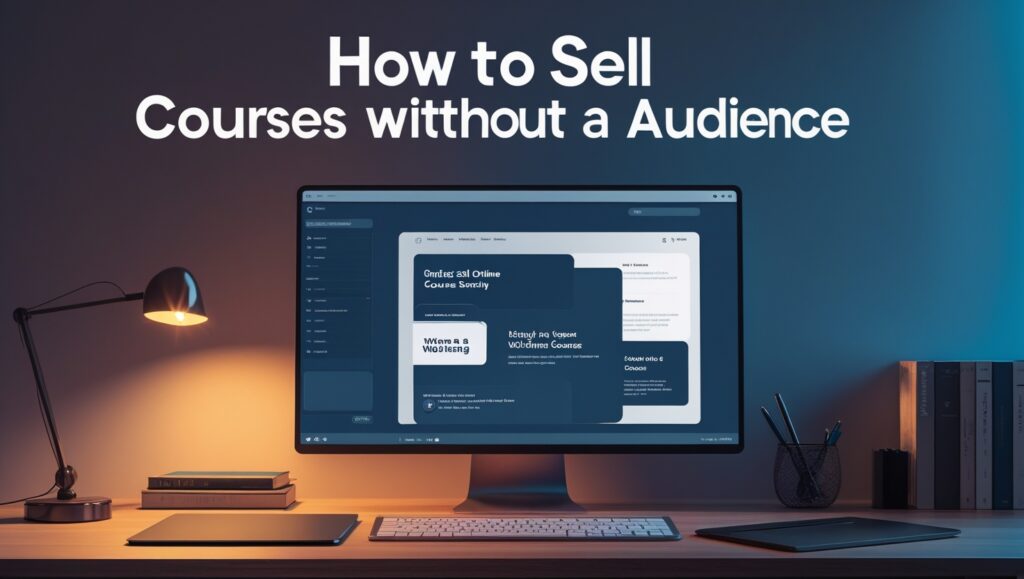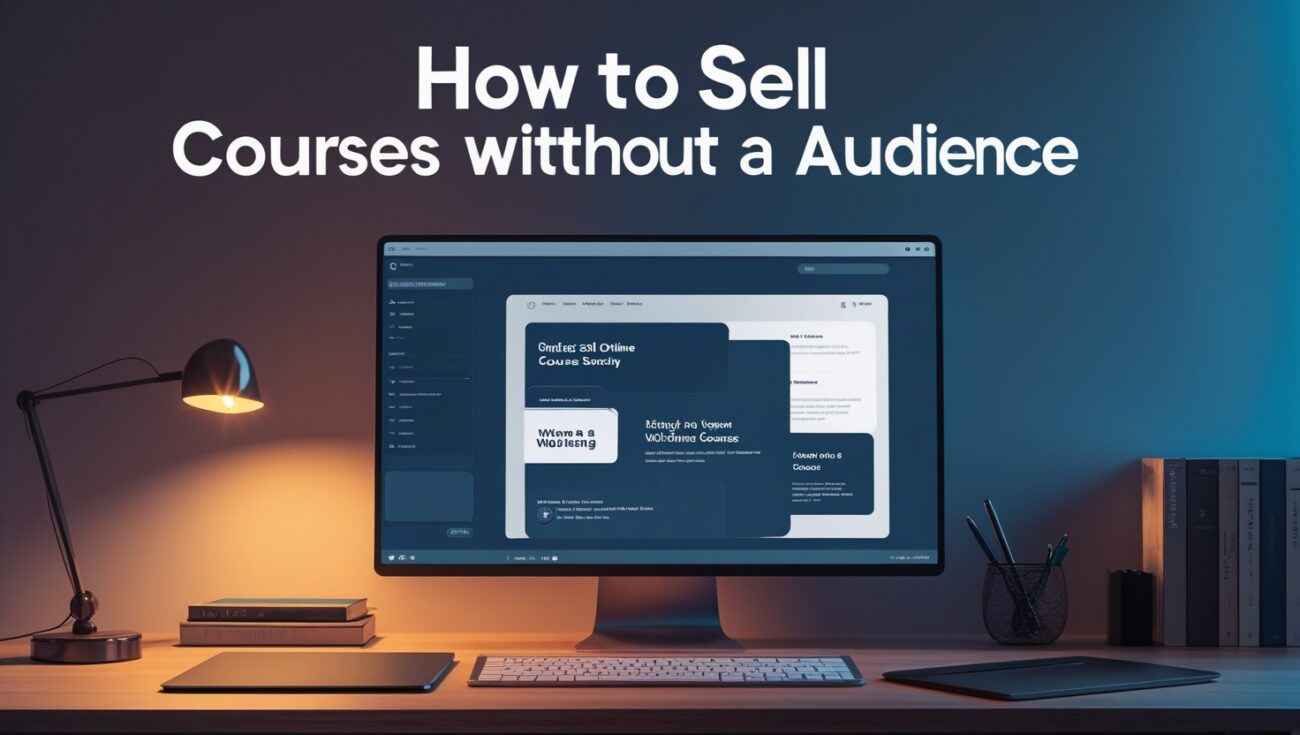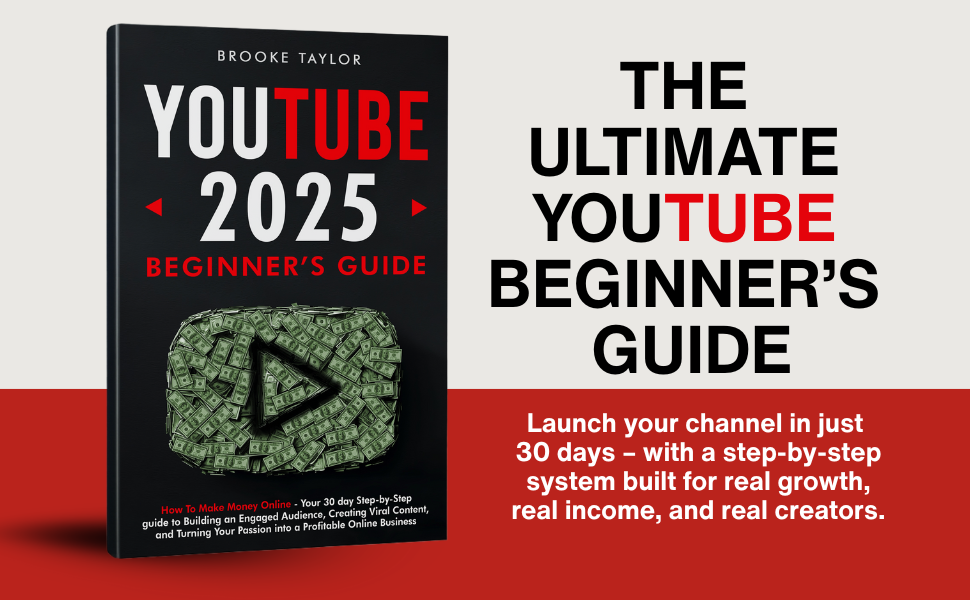How to Sell Online Courses Without a Big Audience
When I first started selling online courses, I thought I needed thousands of followers to make any sales. That belief kept me stuck and frustrated for months.
But I quickly learned that you can sell online courses without a big audience if you focus on the right strategies. In this post, I’ll show you exactly how I did it and how you can too — even with a small following.

Table of Contents
Step 1: Focus on a Specific Problem
One of the biggest mistakes I made at the start was trying to teach too much. Broad courses don’t sell well because they feel overwhelming.
Instead, niche down and solve a specific problem for a specific group of people. When your course is the obvious solution, you don’t need a big audience — you just need the right audience.
Step 2: Build Relationships, Not Followers
A small audience is actually a big advantage because you can personally connect with people.
I reached out to followers who engaged with my content and built real relationships. This allowed me to understand their struggles and show them how my course could help.
If you’re ready to create a space where you can connect with your students and build trust, sign up for Skool here: click this link to create your group now.
Step 3: Use the Right Platform
I used to host my courses on complicated platforms and Facebook Groups, but engagement was terrible. Members got distracted, and the experience didn’t feel professional.
Now I use Skool because it combines:
- A community feed where students can connect
- A classroom for your lessons and resources
- A calendar for live calls and events
- Stripe payments so you can charge monthly or per course
It’s the simplest way I’ve found to deliver a premium student experience.
Step 4: Start Small and Validate
You don’t need to build a giant course library right away. I started with one core training that solved a major pain point and offered it to my warm audience first.
By enrolling just 5–10 students at a time, I was able to validate my course idea, get testimonials, and build momentum.
Step 5: Deliver Results and Build Referrals
The best marketing for your course is student success. When people get results, they naturally refer friends and share your course.
That’s why I focus on giving students personalized support and keeping them engaged in the community.
Why This Works Without a Big Audience
You don’t need vanity metrics to sell courses. You just need a clear offer, a small group of people who want what you’re teaching, and a platform that makes it easy for you to deliver value.
Skool makes this simple because you can nurture relationships, host lessons, and grow your audience all in one place.
Final Thoughts
Stop waiting to grow a huge audience before launching your course. You already have everything you need to start now.
Here’s what I recommend you do today:
- Define the specific problem your course solves
- Sign up for Skool here and set up your group
- Invite your first 5–10 students and deliver incredible results
Even a small launch can lead to a profitable course when you use this strategy.
When I finally stopped worrying about how many followers I had and focused on the people already paying attention, everything changed. I realized a small, engaged audience is much more powerful than a large, disconnected one.
I started by reaching out personally to people who commented on my posts, replied to my emails, or liked my content. These conversations helped me understand exactly what they were struggling with, so I could create a course they genuinely needed.
If you’re ready to build deeper relationships with your audience, sign up for Skool here: click this link to create your group now. It’s the same tool I use to nurture and connect with my students daily.
Another lesson I learned was not to wait until my course was “perfect” to launch. I built the first version quickly and enrolled a handful of students at a lower “founding member price.” This allowed me to validate the idea and make improvements based on real feedback.
I also kept my course focused on results. Instead of cramming it full of information, I designed each lesson to move students closer to their goals. This helped students see progress quickly, which boosted their confidence and kept them engaged.
One thing that surprised me was how much referrals drove my sales. When my first students got results, they naturally told friends and colleagues. That word-of-mouth marketing was far more effective than any ad campaign I could run.
To encourage referrals, I added a simple system inside my Skool group where members could share testimonials and invite others to join. This built social proof and made my course more attractive to new students.
Here’s what you can do this week:
- Define the specific result your course helps people achieve
- Sign up for Skool here and set up your community and classroom
- Upload your first module or resource
- Invite 5–10 people from your existing audience and offer them a founding member price
Once you have those first students, everything gets easier. You’ll get feedback, testimonials, and the confidence to expand your reach.
Another tip is to leverage live coaching or Q&A calls as part of your course. Even if you have a small audience, this adds tremendous value and allows you to charge a higher price. Skool makes it simple because you can schedule events right on the platform’s calendar.
Finally, remember that building relationships is your greatest advantage when you have a small audience. Answer questions, check in on student progress, and celebrate their wins. These small touches make a huge difference and help students stay engaged until they complete the course.
Click here to sign up for Skool now: launch your online course today. You’ll be amazed at how quickly you can create a professional course space, even if your audience is small.







Thank you for creating such valuable content. Your hard work and dedication are appreciated by so many.